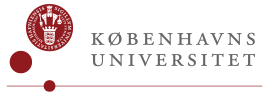Scientific breakthrough: We can now halve the price of costly cancer drug
The demand for the widely used cancer drug Taxol is increasing, but it’s difficult and expensive to produce because it hasn’t been possible to do it biosynthetically. Until now, that is. Researchers from the University of Copenhagen have cracked the last part of a code that science has struggled with for 30 years. The breakthrough could halve the price of the drug and make production far more sustainable.
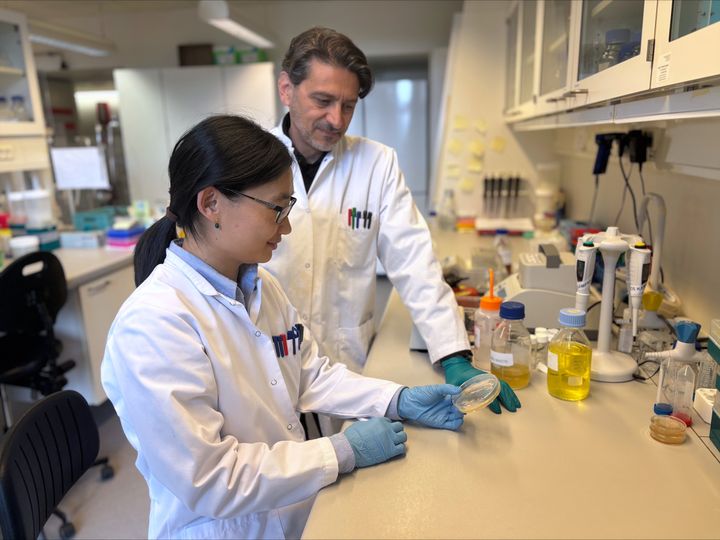
Taxol is one of the most commonly prescribed chemotherapy drugs for breast, ovarian, cervical, and lung cancer. Yet producing the drug is complex, costly, and environmentally burdensome, as it currently relies on a complicated chemical semi-synthesis. For 30 years, scientists around the world have tried to understand how taxol, a natural compound derived from the Pacific yew tree, forms in nature. Decoding this process would allow for biotech-based production. But the final steps remained unknown – until now.
A research team from the University of Copenhagen has succeeded in finding the two missing pieces: They have identified the enzymes responsible for the two critical final steps in the biosynthetic pathway that makes Taxol active as a drug.
"Taxol has been the Holy Grail in this research field for decades because it’s an exceptionally complex molecule. But with the discovery of the final two enzymes, we now fully understand how it’s formed. This has allowed us to develop a biotechnological method to produce taxol in yeast cells," says Sotirios Kampranis, Professor at the Department of Plant and Environmental Sciences and senior author of the study published in Nature Synthesis.
The method involves cloning the taxol-producing genes from the yew tree and inserting them into yeast cells. These engineered yeast cells then become host organisms or micro-factories with the full recipe to produce taxol.
Affecting women in developing countries
The research team from the University of Copenhagen has applied for patenting the method and is in the process of launching a spin-out company to manufacture biosynthetic Taxol.
"Using this method, we can produce Taxol cheaper than current conventional methods. Looking ahead, once we refine the process further, we expect to be able to reduce the cost by half," says Assistant Professor and first author Feiyan Liang.
Lower prices are especially crucial as ovarian cancer is on the rise globally. The prevalence of the disease is expected to increase by over 55 percent by 2050, with the vast majority of cases in low and middle-income countries. The number of women dying from ovarian cancer is projected to rise by nearly 70 percent in the same period.
Currently, taxol costs more than USD 20,000 per kilogram, making it one of the most expensive active pharmaceutical ingredients in use.
"We see increasing demand for Taxol in many developing countries, where the high price is a major barrier. We hope our work will contribute to lower-priced drugs so that more people can have access to cancer treatment," Feiyan Liang says.
Much more sustainable
The new method is not only more cost-effective but also more sustainable than chemical synthesis. One advantage is that the procedure does not involve harmful chemicals and solvents common in chemical production. Another advantage is that it allows the use of more crude, less purified extracts from yew needles as starting material — much cheaper than the ultra-pure inputs required in chemical semi-synthesis. On top of that, the materials can be recycled.
"We want to show that it’s possible to build a biotechnological drug production that is both sustainable and low-cost. There are very few examples of that today, but we now have the foundation to make it happen," says Sotirios Kampranis.
TWO TREES PER TREATMENT
- Taxol was originally extracted from the inside bark of the Pacific yew tree (Taxus brevifolia), but as the taxol content in the bark is very low, harvesting it meant removing all the bark and as a result of this killing the tree.
- Yew trees take 70 to 100 years to mature. Producing just one treatment required about two trees, making this method highly unsustainable. It was abandoned years ago, though wild yew trees are still under pressure in some regions.
- Today’s most common method involves harvesting a similar compound from yew needles for chemical synthesis, but the cost of this process is still high, which is why the average price of taxol exceeds USD 20,000 per kilogram (source: https://www.pharmacompass.com/price/paclitaxel).
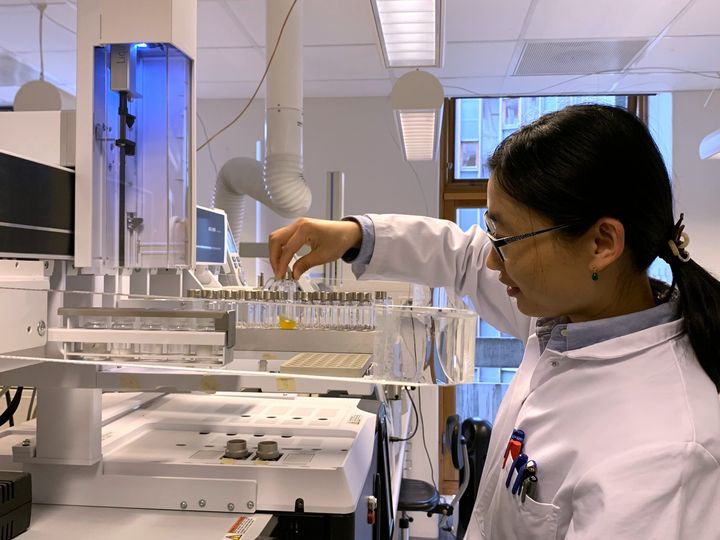
Keywords
Contacts
Sotirios Kampranis
Professor
Department of Plant and Environmental Sciences
University of Copenhagen
soka@plen.ku.dk
+45 35 33 29 89
+45 31 31 55 39
Feiyan Liang
Assistant professor
Department of Plant and Environmental Sciences
University of Copenhagen
fel@plen.ku.dk
+45 35 33 29 45
Maria Hornbek
Journalist
University of Copenhagen
maho@adm.ku.dk
+45 22 95 42 83
Images

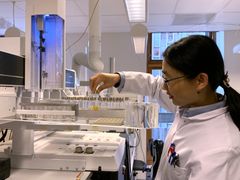
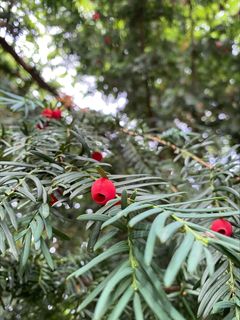
Links
Subscribe to releases from Københavns Universitet - Det Natur- og Biovidenskabelige Fakultet
Subscribe to all the latest releases from Københavns Universitet - Det Natur- og Biovidenskabelige Fakultet by registering your e-mail address below. You can unsubscribe at any time.
Latest releases from Københavns Universitet - Det Natur- og Biovidenskabelige Fakultet
Forskningsgennembrud: Nu kan vi halvere prisen på dyrt kræftmiddel19.5.2025 07:16:00 CEST | Pressemeddelelse
Efterspørgslen på det udbredte kræftmiddel taxol stiger, men stoffet er svært og dyrt at lave, fordi man ikke har kunnet fremstille det biosyntetisk. Ikke før nu. Forskere fra Københavns Universitet har nemlig knækket den sidste del af en kode, som videnskaben har bakset med i 30 år. Gennembruddet kan halvere prisen på lægemidlet og gøre produktionen langt mere bæredygtig.
Saving the Asian Unicorn – If It Still Exists6.5.2025 09:48:24 CEST | Press release
The saola, an antelope-like bovine, is one of the world’s rarest and most endangered mammals. In fact, it hasn’t been observed in over 10 years. Researchers from the University of Copenhagen, in collaboration with Vietnamese scientists and an international team of researchers, have for the first time mapped the saola’s complete genome, and they have used that knowledge to estimate the chances of saving it – if it still exists.
Sådan redder vi den asiatiske enhjørning – hvis den altså findes6.5.2025 07:07:00 CEST | Pressemeddelelse
Den antilopeagtige okse, saolaen, er et af verdens mest sjældne og mest truede pattedyr – faktisk er den ikke blevet set i over 10 år. Forskere fra Københavns Universitet har i samarbejde med vietnamesiske forskere som de første kortlagt saolaens gener, og den viden har de brugt til at beregne sandsynligheden for, at vi kan nå at redde den – hvis den altså stadig findes.
Saving the Asian Unicorn – If It Still Exists5.5.2025 17:00:00 CEST | Press release
The saola, an antelope-like bovine, is one of the world’s rarest and most endangered mammals. In fact, it hasn’t been observed in over 10 years. Researchers from the University of Copenhagen, in collaboration with Vietnamese scientists and an international team of researchers, have for the first time mapped the saola’s complete genome, and they have used that knowledge to estimate the chances of saving it – if it still exists.
Bakterier bruger gammelt krigstrick til at overliste vira: Kan hjælpe med at bekæmpe ’superbugs’30.4.2025 07:30:00 CEST | Pressemeddelelse
Forskere har opdaget en ny type immunforsvar i coli-bakterier, der vender en virusinfektion mod vira selv. Systemet er opkaldt efter den kinesiske militærstrateg Kongming som var berømt for at bruge fjendens våben til at besejre dem. Opdagelsen kan bruges i udviklingen af fremtidige bioteknologiske værktøjer og måske som et alternativ til antibiotika til at bekæmpe multiresistente bakterier.
In our pressroom you can read all our latest releases, find our press contacts, images, documents and other relevant information about us.
Visit our pressroom